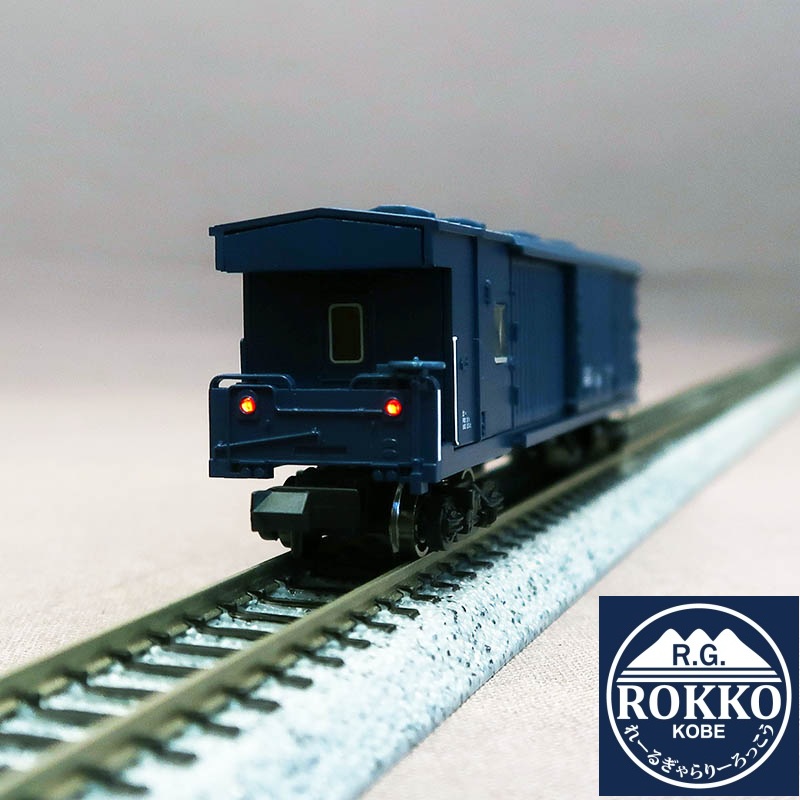(A7262) JNR Wasafu 8802 type (blue)
¥5,100JPY
SKU: MicroAce A7262
Package Volume: 220.00
ItemNumber A7262
JNR Wasafu 8802 type (blue)
Information
Since the dawn of rail, railways have long been responsible for transporting small parcels, but loading and unloading was done by station staff, who had to load and unload each piece of luggage into and out of carriages, a laborious and inefficient process. To overcome this situation, the "pallet system" was introduced, in which luggage was pre-loaded onto wheeled basket-like pallets, which were then loaded and unloaded into carriages. Cars designed for this purpose included passenger baggage cars such as the Suni 40, Suni 41, and Mani 44, and dual-purpose freight cars such as the Waki 8000 and Wasafu 8000. Their appearance and structure, including the sliding baggage doors on the entire side of the carriage, were similar to the Waki 5000 and Waki 10000 freight cars, which could be loaded and unloaded by forklifts. Although the Wasafu 8000 is technically a freight car, it was built with a structure that allowed it to be used as a passenger baggage car as well. One-quarter of the carriage is a conductor's compartment, and a toilet is installed to accommodate long-distance travel. Among these, the Wasafu 8800 series was equipped with a CLE electromagnetic automatic air brake so that it could be coupled to the 20-series passenger cars of the Hokusei limited express, and the exterior color of the baggage doors was changed from plain aluminum to blue. The introduction of these pallet systems had streamlined JNR's small parcel transport, but with the rise of courier companies, demand for small parcel transport continued to decline. Prior to the division and privatization, JNR decided to abolish all but a few freight trains, and the Wasafu 8000 was also scrapped by 1987.
JNR Wasafu 8802 type (blue)
Information
Since the dawn of rail, railways have long been responsible for transporting small parcels, but loading and unloading was done by station staff, who had to load and unload each piece of luggage into and out of carriages, a laborious and inefficient process. To overcome this situation, the "pallet system" was introduced, in which luggage was pre-loaded onto wheeled basket-like pallets, which were then loaded and unloaded into carriages. Cars designed for this purpose included passenger baggage cars such as the Suni 40, Suni 41, and Mani 44, and dual-purpose freight cars such as the Waki 8000 and Wasafu 8000. Their appearance and structure, including the sliding baggage doors on the entire side of the carriage, were similar to the Waki 5000 and Waki 10000 freight cars, which could be loaded and unloaded by forklifts. Although the Wasafu 8000 is technically a freight car, it was built with a structure that allowed it to be used as a passenger baggage car as well. One-quarter of the carriage is a conductor's compartment, and a toilet is installed to accommodate long-distance travel. Among these, the Wasafu 8800 series was equipped with a CLE electromagnetic automatic air brake so that it could be coupled to the 20-series passenger cars of the Hokusei limited express, and the exterior color of the baggage doors was changed from plain aluminum to blue. The introduction of these pallet systems had streamlined JNR's small parcel transport, but with the rise of courier companies, demand for small parcel transport continued to decline. Prior to the division and privatization, JNR decided to abolish all but a few freight trains, and the Wasafu 8000 was also scrapped by 1987.

